Sony Xperia Z5 Review
Introduction
With the Xperia Z5 family, Sony has definitely piqued the interest of the public, delivering not one, but three flagship devices. The Z5 Premium is the world first 4K screen phone, while the Xperia Z5 compact is a powerhouse device with a small footprint.This, however, puts the regular Z5 in somewhat of an odd spot. For the first time ever, the standard "Z" model is not the "latest and greatest" Sony has to offer. It also almost identical to the Z3+, while being quite a bit more expensive.
But reading the specs on paper really doesn't reveal the extent in which To really see the Z5 for what it is and understand all the work Sony has put into making it a familiar, yet refined device, we have to dig deeper. That is just what we intend to do in the following pages - to see just how different the Z5 is from the Z3+, what has changed and what has been preserved. To discover if the Z5 is Sony's flagship savior, or just a fixed-up Z3+, bound to stay underappreciated amidst its superstar siblings.
Key features
- 5.2" 16M-color 1080 x 1920 IPS LCD capacitive touchscreen with X Reality for Mobile, Triluminos technology and Dynamic Contrast Enhancer; scratch-resistant glass, oleophobic coating
- Android OS v5.1.1 Lollipop with Xperia launcher
- Octa-core Qualcomm MSM8994 Snapdragon 810, feat. a quad-core 1.5 GHz Cortex-A53 and quad-core 2 GHz Cortex-A57 and an Adreno 430 GPU and 3GB RAM
- 23 MP camera with 2160p@30fps video recording; 5.1 MP front-facing camera with 1080p@30fps video
- 32GB of built-in storage and a microSD card slot
- LTE Cat.4 (150Mbps)/Cat.6 (300Mbps), depending on the region; Dual-band Wi-Fi a/b/g/n/ac; A-GPS/GLONASS receiver, Bluetooth v4.1, FM radio with RDS
- Active noise cancellation with a dedicated mic
- 2,900mAh non-removable battery
- IP68 certified - dust and water proof up to 1.5 meter and 30 minutes
- Fingerprint sensor
Main disadvantages
- Screen bezels are wider than the Xperia Z3+
- Non-removable battery
- Heavier and thicker than the Xperia Z3+
Sony is betting big on its new multi-aspect 23MP sensor, which is being marketed as the Z5's major feature. However, the same shooter is actually present in the Z5 Compact and Z5 Premium as well, so it is not quite as exclusive to the model as Sony would have you believe. It's nonetheless an excellent camera and we can't wait to put it to use.
But let's not get ahead of ourselves. The most important thing is that the Z5 Compact promises to learn from the Z3+ and its mistakes and excel where it failed. That's alone is enough to warrant a full length review. So jump on.
Unboxing
The Sony Xperia Z5 comes with rather minimalistic packaging. It is housed inside a white, two piece cardboard box, without any fancy finish, embossing or other accents to suggest a premium product. That, however, is in no way a complaint as a lavish box, like the one on the Huawei P8, for example, only ramps up the overall price with little to no other purpose, as in today's world a smartphone is almost never an off-the-shelf supermarket purchase.However, it is worth noting that the Z5 comes bundled with all the essentials - a wall charger (1.5 A), USB cable, both of nice quality as well as a pair of in-ear headphones. They are far from superb in terms of sound quality, but are still well above average. They sound nice, feel sturdy enough to last at least a few months and also come with two extra padding sizes and a clip.
It is worth noting that bundled accessories vary from market to market. Alto the photo above is of the Sony MDR-NC750 High-Resolution Audio Headset, which, when used with the Z5 provides active noise cancelling.
Sony Xperia Z5 360-degree spin
The Sony Xperia Z5 boasts a slick and clean exterior. It is styled entirely following Sony's new minimalistic design language.Design and build quality
One thing is definitely changed on the Z5 and that is the design and the same goes for its sibling - the Premium and Compact, as well. With the Z5 series Sony is making a significant revision of its signature design language. It is the biggest such undertaking since the Xperia Z1 and all members of the Z5 family, share this common new exterior.It seems that Sony's vision was to go a step beyond the symmetry of its previous devices. The new design language takes the concept of uniformity to a whole new level. The Z5 is not only symmetrical, it looks almost identical from every angle - no more accents on curves or groves, no more obvious grills, everything is tucked away to create a minimalistic exterior as if the phone has been machined out of a single uniform block.
Some people are sure to find the new understated looks boring, but it is quite charming in its simplicity. But, you shouldn't let the clean looks deceive you, the Z5 packs a lot of power.
The Z5 measures 146 x 72 x 7.3 mm, which is almost identical to the Z3+, except it is a tad thicker, but we could hardly tell the difference. In terms of weight, however, the Z5 tips the scale at 154 grams, which is exactly 10 grams more than the Z3+.
As already mentioned, the whole Z5 lineup shares a common design and the bunch can definitely be mistaken from a distance, especially if you don't watch out for the model-specific color options. One such detail are the four bumper edges of the Z5, which, unlike the smooth finish on the Z5 Compact, are quite visibly made from a different material than the rest of the frame.
This is due to the fact that the higher-end Z5 and Z5 Premium use a metal frame that Sony has decided to reinforce by replacing the edges with a polycarbonate plastic. This might not look as smooth as the one piece solution on the Compact, but it is arguably a better overall design that allows you to have both the premium feeling of a metal frame and protection against easy denting of said metal on the most-likely contact points in a drop.
The back on the Z5 Compact is made of frosted glass (another way of saying matte glass) and Sony has really got the most out of the available materials. The body feels nice to the touch and the finish does not look cheap in any way. The handset comes in two classic colors - white and black, as well as two additional more vibrant options - yellow and green.
Controls
Just like the Z5 Compact, Sony has decided to leave the display of the Z5 mostly unchanged compared to its predecessor. Hence, the phone is equipped with a 5.2 inch 1080 x 1920 pixels display, just like the Z3+. As far as we are concerned FullHD is a perfect choice, but valid arguments could also be made for the need of higher resolution, like QHD, mostly to keep up with other flagship phones out there. Thankfully, however, this time around Sony can't be accused of lacking behind on the new fad thanks to the Z5 Premium, which, if anything, takes high res to the extreme with the first 4K display on a mobile phone.That being said, the 1080p panel of the Z5 seems like the most reasonable choice Sony could have made.
 Surprisingly enough, bezels have also gotten bigger and the Z5 now
has a screen to body ratio of 69.6%, instead of the 70.9% of the Z3+.
This is also the case with the Z5 Compact and the Z3 Compact. But, once
again, the difference is barely noticeable, especially in black.
Surprisingly enough, bezels have also gotten bigger and the Z5 now
has a screen to body ratio of 69.6%, instead of the 70.9% of the Z3+.
This is also the case with the Z5 Compact and the Z3 Compact. But, once
again, the difference is barely noticeable, especially in black.Overall, the front of the Z5 is clean and decluttered. The 5.1MP front camera is placed just to the left of the Sony logo, above the display and is void of any rings or color accents, so it can blend in.
You can really tell that Sony is making an extra effort to bring a new minimalistic feel to the Z5. This design language also extends to the earpiece grill, which is now almost invisible. So is the symmetrical bottom speaker grill and it is actually the only thing found beneath the screen. It also houses the main microphone.
Going around the device, we find the left side almost empty. The SIM card and MicroSD slot are hidden under a tightly sealed flap. It does a splendid job of water-sealing the sensitive components, but does have a grove near the bottom that stands out on the otherwise flush side. It does, however, aid greatly in opening the cover, which is at least some conciliation.
There is only one other details on the left frame of the Z5 - a machined premium looking Xperia insignia - definitely a nice accent. It is actually one of the few little additions that is exclusive to the Z5 family, so you can look for it if you have trouble telling the Z3 Compact and Z5 Compact apart and even more so, the almost identical twins - Z3+ and Z5.
The right-hand side is a little bit more crowded. It houses the silver power button, which also tends to stand out, especially on our dark grey review unit.
It is, however, just as instantly recognizable as the old round signature Sony one and it does actually make a lot of sense to leave at least one such distinguishing detail on a device that can otherwise be instinctively grabbed in any orientation. The embedded fingerprint reader might also have something to do with the color.
 However, it is quite a lot harder to justify the volume rocker
position. Instead of being above the power button, Sony has decided to
place the control underneath it. This is a common trait for the entire
Z5 family and is arguably quite inconvenient. And before you flame us in
the comment section, we are aware that the older Z3 series has a
similar layout, but the rocker was positioned a bit higher, making it
easier to press with your thumb.
However, it is quite a lot harder to justify the volume rocker
position. Instead of being above the power button, Sony has decided to
place the control underneath it. This is a common trait for the entire
Z5 family and is arguably quite inconvenient. And before you flame us in
the comment section, we are aware that the older Z3 series has a
similar layout, but the rocker was positioned a bit higher, making it
easier to press with your thumb.Near the bottom, there is a very thin and almost unnoticeable shutter button. It makes taking photos all that more convenient, especially underwater where the capacitive touchscreen might play tricks on you.
The 3.5mm headphone jack is placed on the top of the device, in the left corner. Next to it is the secondary noise-canceling microphone.
The bottom side of the Z5 is relatively bare as well. It houses the microUSB port, which thanks to Sony's additional waterproof coating no longer needs a cover flap.
The only other thing on the bottom is the lanyard eyelet. While still convenient for a lot of people it is somewhat of an eye-sore, s for some reason Sony has decided to make it a deep cavern that extends well inside the device. However, it is arguably a lot less noticeable than the one on the Z5 Compact, which is on the side of the unit.
Around the back of the Z5, we find a matte glass panel, complete with an exquisite frosted finish and thankfully not the type that would be easily covered in fingerprints. The only controls found here are the new 23MP camera, just like the one on the Z5 Premium and Compact, along with a single LED flash.
Other than that, on the back there is both Sony and Xperia branding, as well as the traditional tiny NFC logo as this is where the NFC contact area is located. The logo itself has a rubbery finish to it - yet another pleasant example of attention to detail on Sony's part.
Display
As already mentioned, Sony has opted for a more traditional panel on the Z5. FullHD might be a letdown for some, but, then again, there the Z5 Premium to fill that niche and add some. In reality, 1080 x 1920 pixels are perfectly adequate, especially on a 5.2-inch screen and with 428 ppi, the phone is definitely not suffering from any shortage of pixels.Other than that, the panel itself is o the typical for Sony IPS LCD variety, but that is not necessarily a bad thing, especially considering the improved tech, reportedly put inside - things such as Mobile BRAVIA Engine 2, Triluminos technology and X-Reality engine for mobile come to mind (and being able to quote those on the top of our heads can't be a healthy thing for sure).
All this amounts to nice and sharp images on the Z5 and the 1080p resolution also brings the added bonus of less stain on the GPU and consequently, less heat and a longer battery life, at least in theory, that is.
 The Sony Xperia Z5 screen has an above average maximum brightness
(583nits) and it can go even slightly higher in bright sunlight when in
Auto mode (603nits). Unfortunately, these levels are a far cry from the
ones achieved by the Xperia Z5 Compact and most importantly, the Xperia
Z3+.
The Sony Xperia Z5 screen has an above average maximum brightness
(583nits) and it can go even slightly higher in bright sunlight when in
Auto mode (603nits). Unfortunately, these levels are a far cry from the
ones achieved by the Xperia Z5 Compact and most importantly, the Xperia
Z3+.On a more positive note though, the blacks on this year's Sony flagship are deeper than on any of the predecessors. The reason for that most probably being the newly added Contrast filter between the backlight and LCD panel.
Unfortunately, these weren't enough to produce anything more than average contrast ratio (986:1), especially when compared to the Xperia Z3+ (1158).
| Display test | 50% brightness | 100% brightness | ||||
| Black, cd/m2 | White, cd/m2 | Black, cd/m2 | White, cd/m2 | |||
| 0.10 | 106 | 1060 | 0.65 | 680 | 1053 | |
| 0.10 | 90 | 900 | 0.59 | 583 | 986 | |
| - | - | - | 0.68 | 789 | 1158 | |
| 0.17 | 207 | 1230 | 0.61 | 740 | 1213 | |
| 0.17 | 208 | 1197 | 0.52 | 705 | 1361 | |
| 0.00 | 208 | ∞ | 0.00 | 473 | ∞ | |
| 0.00 | 208 | ∞ | 0.00 | 473 | ∞ | |
| 0.09 | 108 | 1240 | 0.43 | 532 | 1238 | |
| 0.00 | 291 | ∞ | 0.00 | 399 | ∞ | |
| 0.00 | 149 | ∞ | 0.00 | 372 | ∞ | |
| 0.15 | 175 | 1180 | 0.44 | 534 | 1221 | |
| 0.16 | 180 | 1139 | 0.30 | 399 | 1334 | |
| 0.13 | 107 | 796 | 0.44 | 390 | 879 | |
| 0.07 | 89 | 1372 | 0.32 | 450 | 1398 | |
| 0.08 | 110 | 1392 | 0.63 | 527 | 839 | |
| 0.00 | 117 | ∞ | 0 | 346.00 | ∞ | |
| 0.29 | 258 | 893 | 0.49 | 440 | 898 | |
In terms of sunlight legibility, the Z5 is pretty comparable to its little brother. Both get decent scores, but there is still a lot of room for improvement left.
Sunlight contrast ratio
- Nokia 808 PureView 4.698
- Samsung Galaxy Note 2.97
- Samsung Galaxy Premier 2.958
- Sony Xperia Z1 2.95
- HTC One S 2.901
- Lenovo S90 Sisley 2.892
- Sony Xperia Z5 2.876
- Samsung I8730 Galaxy Express 2.861
- BlackBerry Q10 2.856
- Samsung I9100 Galaxy S II 2.832
- Sony Xperia Z3+ 2.824
- HTC Desire Eye 2.815
- Samsung Galaxy mini 2 1.114
Color accuracy of course takes an extra hit when you turn on the screen image enhancements such as the X Reality for mobile mode (Avg deltaE 8.3) but the representation of the whites remains unchanged in this mode. The maximum brightness however is reduced in these modes down to about 550 nits. Interestingly, from there on the Super Vivid mode doesn't make things any worse and it's not as wild as the name suggests.
As usual, display colors are a matter of personal taste and perception so if you don't need calibrated color output, you will probably be quite happy with the default settings of the Xperia Z5 Compact display.
You can fine tune the display color rendering to an extent as Sony gives you fine grain sliders for adjusting the Red, Green and Blue channel, but the UI is far from user friendly and unlikely to produce any serious results without a reference point sitting side by side with the display. Even worse, as soon as you start fiddling with those sliders, the maximum brightness will take a hit.
Sony Xperia Z5 battery life
The Sony Xperia Z5 is powered by a 2900 mAh battery, sealed-in, as expected. That is quite a bit less less than the Z5 Premium at 3430 mAh, but still better than the 2700 mAh pack of the Z5 Compact. As for the Z3+, it has just a bit more juice at 2930 mAh, but that still makes the pair quite comparable and will help up see if Sony has, indeed, improved the power efficiency of its flagship offer. Overall, with an endurance rating of 73 hours, the Xperia Z5
definitely did alright in our tests, but still not quite the 86 hours
the Z5 Compact managed to clock in. Granted, the scores are pretty
close, but we expected almost identical results, considering the
identical hardware, but, apparently the display size played a huge role.
Our test reveal that the Z5 did better than its smaller sibling in
terms of call endurance and web browsing, but failed to impress with
only about 8 hours of video playback and quite a draining standby mode.
Overall, with an endurance rating of 73 hours, the Xperia Z5
definitely did alright in our tests, but still not quite the 86 hours
the Z5 Compact managed to clock in. Granted, the scores are pretty
close, but we expected almost identical results, considering the
identical hardware, but, apparently the display size played a huge role.
Our test reveal that the Z5 did better than its smaller sibling in
terms of call endurance and web browsing, but failed to impress with
only about 8 hours of video playback and quite a draining standby mode.On a more positive note, however, the Z3+ managed to last only 65 hours under the same test conditions, despite having a slightly bigger battery than the Z5. This is a definite improvement on Sony's end.
An endurance rating of 73 hours means that the Z5 should be more than happy to facilitate two days of average use, or at least our understanding of it - one hour of browsing, video playback and calls a day, respectively and the rest - standby.
Such usage pattern is of course entirely artificial, but we've established it so our battery results are comparable across devices. And if it doesn't quite fit your bill, you can easily hop on to our battery life chart and adjust the pattern to your liking for an even more comprehensive comparison.
Connectivity
Sony is offering the Z5 in both a single SIM and dual SIM variant, just like the Z5 Premium. The handset offers quad-band GSM/GPRS/EDGE/HSDPA support. LTE is enabled and Sony has multiple regional models to make sure the Xperia Z5 will work with the most widespread 4G networks. It is worth noting that the E6653 variant offers Cat.6 LTE with speeds of up to 300Mbps, while the E6603 one still has Cat.4 with a theoretical maximum of 150Mbps. This, however, makes little difference in real world conditions and shouldn't really be a consideration.Local connectivity features dual-band Wi-Fi b/g/n/ac and Wi-Fi Direct. There is also support for Bluetooth 4.1 with A2DP. Satellite navigation is also a given, with additional A-GPS and GLONASS or Beidou (market dependent) support.
The Xperia Z5 also has an FM radio with RDS.
The phone doesn't offer an IR port, but it does come with NFC.
There is a microUSB 2.0 port for charging and data connections and now, thanks to special coating, it no longer needs to be covered by a flap. Media transfer mode is supported for accessing the phone's built-in memory and microSD card over the USB cable.
USB host functionality is present, but requires a little more work than simply plugging in a device. There is a special menu under Xperia Connectivity in the setting that allows you to "discover" a plugged USB device. It still works as expected, but it requires some extra legwork. This is most likely related to the aforementioned coverless USB that might be vulnerable to shortages under water.
Being part of the premium "Z" line has a few other benefits, like MHL 3 TV-out support. You can also output your phone's screen wirelessly via the Miracast protocol or Sony's Xperia Connectivity Throw option.
The app also lets you share your media over DLNA by creating a media server, as well as connect to a PlayStation DUALSHOCK 3 (or 4) wireless controller.
Last, but not least, the Z5 offers advanced active noise cancelling when paired with a supported handset like the Sony MDR-NC750.
Performance
Specs-wise, the Xperia Z5 is a true flagship, no doubt about it. It runs on a Qualcomm MSM8994 Snapdragon 810 SoC, which is still the chip manufacturer's top offer, at least until the 820 comes along. It has more than enough power to spare, but also happens to be the exact same hardware involved in the Z3+ overheating fiasco.Whether it was Sony's fault or a faulty chipset batch doesn't really matter, as, at the end of the day, the Z3+ did, for a fact, overheat quite badly. This bad reputation quickly started dragging down Sony mobile's fortunes and looked like a primary motivator for the quick release of the Z5 family. This did, effectively, push the flagship issue under the rug and we are also happy to report that, as expected, Sony has made sure the Z5 doesn't suffer from overheating.
 Sony has really gone the extra length to ensure the Z5 handles heat
diligently by employing a dual heat-pipe cooling system and quite a bit
of high-efficiency thermal paste. It definitely does a better job at
pulling heat away from the chip, so, even though the Z5 and Z3+ share
the same core computing silicon, the former has the added benefit of
better thermal management, which is generally a major stability and
performance booster. It is just like investing in a big and pricy
aftermarket heat sink to replace the small OEM one on a desktop pc -
quite a natural thing to do and we applaud Sony for it.
Sony has really gone the extra length to ensure the Z5 handles heat
diligently by employing a dual heat-pipe cooling system and quite a bit
of high-efficiency thermal paste. It definitely does a better job at
pulling heat away from the chip, so, even though the Z5 and Z3+ share
the same core computing silicon, the former has the added benefit of
better thermal management, which is generally a major stability and
performance booster. It is just like investing in a big and pricy
aftermarket heat sink to replace the small OEM one on a desktop pc -
quite a natural thing to do and we applaud Sony for it.However, before we get too carried away, there is an important note to be made here. The Z5 might handle heat better than the Z3+, but it still got quite toasty during our benchmark tests. This time around, however, it is nothing to worry about and quite tolerable, so Sony did, in fact, remedy the original issues. Still, it is also worth noting that despite its small size and identical hardware, the Z5 Compact did run a little colder than its full-size sibling. That is odd, to say the least, but the Z5 did also manage to score a bit higher in CPU tests, so, perhaps, Sony is pushing it a bit harder. But, we digress.
The rest of the Z5's specs sheet seems just as worthy for a 2015 flagship. The aforementioned eight-core chip (Quad-core 1.5 GHz Cortex-A53 & Quad-core 2 GHz Cortex-A57) is backed up by an Adreno 430 GPU, 3GB of RAM and 32GB of expendable storage. The phone's price tag also puts it squarely in the high-end realm and lets it rub shoulders with most other current flagship smartphones like the Samsung Galaxy S6, the LG G4 and perhaps even the 16GB iPhone 6s, although that might be a little bit of a stretch.
We made sure to pit the Z5 against all of these phones in the benchmark comparison below and also included a few other high-end offers that come close in specs to what the Z5 has to offer, like the Xiaomi Mi 4c, HTC One M9, OnePlus 2, Meizu MX5 and others. Last, but definitely not least, we threw in a few other Xperia handsets, like the aforementioned Z5 Compact, which we recently reviewed, as well as the nicely specked mid-range Xperia M5.
First up, we have the raw CPU performance test with GeekBench 3 and this is where the eight cores get to shine. We can happily report that the Z5 is performing up to par with other Snapdragon 810 devices. It fact, Sony seem to have done a truly terrific job in utilizing the raw CPU power to the fullest extent, outshined slightly only by the OnePlus 2, which has the same chipset. The Z5 did also score a couple of hundred points more than the Compact and seeing how this is a CPU only test and the extra gig of RAM couldn't weigh in like in some other scenarios, it does seem the Z5 is staining itself a bit more.
There is an interesting observation to be made here, pertaining to the Xperia M5. Like we already mentioned, despite being a mid-range phone by design, its MediaTek Helio X10 SoC definitely holds its own and scores only a couple of hundred points below the Z5 Compact. If it is raw computational power you are after, then the latter might be a perfectly viable choice and it does come with a lower price tag than the Z5. However, the weaker GPU does take its toll in most of the other tests, so there is a definite tradeoff in making the more economical choice.
GeekBench 3
Higher is better
- Samsung Galaxy S6 5215
- Meizu MX5 5110
- Samsung Galaxy S6 edge 5095
- OnePlus 2 4429
- Apple iPhone 6s 4427
- Sony Xperia Z5 4017
- Sony Xperia Z5 Compact 3796
- ZTE Nubia Z9 3795
- HTC One M9 3761
- Sony Xperia M5 Dual 3554
- LG G4 3522
- Sony Xperia Z3+ 3402
- Samsung Galaxy Note 4 3394
- Xiaomi Mi 4c 3321
- Motorola Nexus 6 3285
- Asus Zenfone 2 ZE551ML (Z3580) 2887
- Apple iPhone 6 Plus 2884
- Apple iPhone 6 2835
Taking the smaller screen resolution into account, as expected, it actually turned out that the Compact is comes out on top and outscores the full size Z5, as far as synthetic benchmarks are concerned.
AnTuTu 5
Higher is better
- Samsung Galaxy S6 edge 70053
- Samsung Galaxy S6 69396
- Sony Xperia Z5 Compact 61481
- Apple iPhone 6s 59074
- ZTE Nubia Z9 54705
- HTC One M9 51427
- Xiaomi Mi 4c 50875
- Sony Xperia Z5 50611
- Motorola Nexus 6 49803
- Sony Xperia Z3+ 49441
- Samsung Galaxy Note 4 49273
- Meizu MX5 48915
- LG G4 48693
- Asus Zenfone 2 ZE551ML (Z3580) 47254
- OnePlus 2 47207
- Apple iPhone 6 45545
- Sony Xperia M5 Dual 38786
Basemark OS II
Higher is better
- OnePlus 2 1942
- Samsung Galaxy S6 edge 1826
- Sony Xperia Z5 1825
- Samsung Galaxy S6 1769
- Sony Xperia Z5 Compact 1696
- HTC One M9 1526
- Motorola Nexus 6 1509
- Xiaomi Mi 4c 1464
- Sony Xperia Z3+ 1410
- Samsung Galaxy Note 4 1332
- Apple iPhone 6 Plus 1222
- Meizu MX5 1163
- Huawei Honor 7 1038
- Sony Xperia M5 Dual 804
Basemark OS II (single-core)
Higher is better
- Apple iPhone 6 Plus 4031
- Samsung Galaxy S6 3497
- Samsung Galaxy S6 edge 3372
- Sony Xperia Z5 3089
- Sony Xperia Z5 Compact 3085
- Xiaomi Mi 4c 2708
- Samsung Galaxy Note 4 2574
- HTC One M9 2401
- Huawei Honor 7 2251
- OnePlus 2 2047
- Motorola Nexus 6 1967
- Meizu MX5 1957
- Sony Xperia M5 Dual 1538
- Sony Xperia Z3+ 1453
Basemark OS II (multi-core)
Higher is better
- Samsung Galaxy S6 16986
- Samsung Galaxy S6 edge 16856
- Meizu MX5 16485
- Huawei Honor 7 13708
- OnePlus 2 10799
- HTC One M9 10128
- Sony Xperia Z5 Compact 9994
- Motorola Nexus 6 9915
- Apple iPhone 6 Plus 9604
- Samsung Galaxy Note 4 9198
- Sony Xperia Z5 8148
- Xiaomi Mi 4c 7366
- Sony Xperia Z3+ 6995
- Sony Xperia M5 Dual 6168
As you might remember, the hardware platform in question is actually shared across the whole Z5 family, which means that the smaller Z5 Compact also has the Adreno 430 at its disposal. This, combined with a 720p resolution display allows it to achieve amazing scores, even with the new Open GL ES 3.1. The Z5, with its FullHD display is a lot more modest in on-screen frame rates, but still holds its own. As for offscreen rendering, results are comparable, as expected.
GFX 2.7 T-Rex (1080p offscreen)
Higher is better
- Apple iPhone 6s 79.8
- Samsung Galaxy S6 59
- Samsung Galaxy S6 edge 59
- ZTE Nubia Z9 58
- Sony Xperia Z5 Compact 56
- Sony Xperia Z3+ 50
- Sony Xperia Z5 49
- HTC One M9 49
- OnePlus 2 48
- Apple iPhone 6 Plus 44.6
- Samsung Galaxy Note 4 40
- Motorola Nexus 6 38.9
- Xiaomi Mi 4c 35
- LG G4 34
- Meizu MX5 27
- Sony Xperia M5 Dual 23
- Huawei Honor 7 17
GFX 2.7 T-Rex (onscreen)
Higher is better
- Apple iPhone 6s 59.6
- Sony Xperia Z5 Compact 57
- ZTE Nubia Z9 51
- HTC One M9 50
- Sony Xperia Z5 49
- OnePlus 2 46.7
- Sony Xperia Z3+ 46
- Samsung Galaxy S6 edge 39
- Samsung Galaxy S6 38
- Xiaomi Mi 4c 35
- Motorola Nexus 6 27.4
- Meizu MX5 27
- Samsung Galaxy Note 4 26
- LG G4 25
- Sony Xperia M5 Dual 24
- Huawei Honor 7 19
GFX 3.0 Manhattan (1080p offscreen)
Higher is better
- Apple iPhone 6s 39.5
- ZTE Nubia Z9 27
- Samsung Galaxy S6 edge 26
- Sony Xperia Z5 Compact 25
- Samsung Galaxy S6 24
- Sony Xperia Z5 24
- HTC One M9 23
- OnePlus 2 22
- Sony Xperia Z3+ 21
- Apple iPhone 6 Plus 18.6
- Motorola Nexus 6 18.6
- Samsung Galaxy Note 4 18
- LG G4 15
- Xiaomi Mi 4c 15
- Meizu MX5 10
- Huawei Honor 7 9.2
- Sony Xperia M5 Dual 8.4
GFX 3.0 Manhattan (onscreen)
Higher is better
- Apple iPhone 6s 53.6
- Sony Xperia Z5 Compact 39
- ZTE Nubia Z9 26
- Sony Xperia Z5 25
- HTC One M9 24
- OnePlus 2 22
- Sony Xperia Z3+ 21
- Xiaomi Mi 4c 15
- Samsung Galaxy S6 edge 15
- Samsung Galaxy S6 14
- Motorola Nexus 6 11.9
- Samsung Galaxy Note 4 11
- Meizu MX5 9.5
- LG G4 9.4
- Huawei Honor 7 9.3
- Sony Xperia M5 Dual 8.7
GFX 3.1 Manhattan (1080p offscreen)
Higher is better
- ZTE Nubia Z9 19
- Sony Xperia Z5 Compact 18
- Sony Xperia Z5 18
- OnePlus 2 16
- Sony Xperia Z3+ 16
- Xiaomi Mi 4c 10
- LG G4 9.9
- Huawei Honor 7 4.9
- Meizu MX5 4.8
- Sony Xperia M5 Dual 4.5
GFX 3.1 Manhattan (onscreen)
Higher is better
- Sony Xperia Z5 Compact 38
- Sony Xperia Z5 19
- ZTE Nubia Z9 19
- Sony Xperia Z3+ 17
- OnePlus 2 16
- Xiaomi Mi 4c 9.7
- LG G4 5.6
- Huawei Honor 7 5.2
- Sony Xperia M5 Dual 4.9
- Meizu MX5 4.7
Kraken 1.1
Lower is better
- Apple iPhone 6s 1737
- Apple iPhone 6 2880
- Samsung Galaxy S6 edge 3989
- Samsung Galaxy S6 4154
- Xiaomi Mi 4c 4506
- LG G4 4639
- Apple iPhone 6 Plus 4650
- Samsung Galaxy Note 4 5181
- Asus Zenfone 2 ZE551ML (Z3580) 5232
- HTC One M9 5500
- Sony Xperia Z5 5635
- Motorola Nexus 6 6088
- OnePlus 2 6808
- Sony Xperia Z5 Compact 7868
- Sony Xperia Z3+ 9204
- Meizu MX5 11414
- Huawei Honor 7 11493
- ZTE Nubia Z9 20208
- Sony Xperia M5 Dual 25088
BrowserMark 2.1
Higher is better
- Apple iPhone 6 Plus 3389
- Samsung Galaxy S6 2718
- Samsung Galaxy S6 edge 2702
- Sony Xperia Z5 2303
- Samsung Galaxy Note 4 2232
- Xiaomi Mi 4c 2113
- Sony Xperia Z5 Compact 2099
- OnePlus 2 2055
- LG G4 1992
- HTC One M9 1681
- Meizu MX5 1471
- Motorola Nexus 6 1447
- Sony Xperia Z3+ 1436
- Sony Xperia M5 Dual 1203
- ZTE Nubia Z9 887
- Huawei Honor 7 825
As for the other elephant in the room - Z5 or Z3+ - performance isn't really all that different and perhaps shouldn't serve as an incentive in itself to shell out the extra money. However, if you find yourself drawn to some of the Z5's other features, like the camera or fingerprint reader, then the steeper price might well be justified, but it is worth noting that either way, you will be getting a pretty powerful device.
Promising 23MP camera
No proper modern day flagship could be truly complete without a powerful camera and the Z5 definitely makes no exception. Sony has decided to equip the whole Z5 family with a new 23MP camera. That means that the handset should have pretty compatible photo quality to the Z5 Compact and even the Z5 Premium. Sony might be marketing the new camera as simply a 23MP one, paired
with an f/2.0 24mm-equivalent wide-angle lens, but there is actually a
lot more going on behind the scenes. The sensor it uses, said to be the
Sony IMX300 is actually what is known as a multi-aspect sensor and in
reality has quite a bit more pixels - around 25MP to be exact.
Sony might be marketing the new camera as simply a 23MP one, paired
with an f/2.0 24mm-equivalent wide-angle lens, but there is actually a
lot more going on behind the scenes. The sensor it uses, said to be the
Sony IMX300 is actually what is known as a multi-aspect sensor and in
reality has quite a bit more pixels - around 25MP to be exact.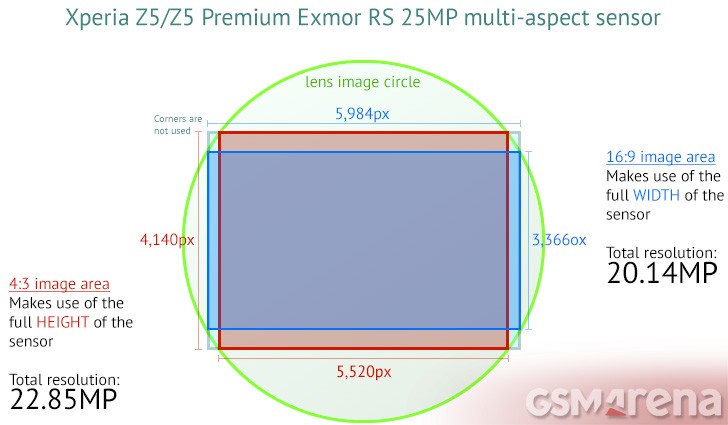 Sony doesn't market this officially and instead cited the 23MP (well,
actually about 22.85MP) resolution or 5520 x 4140 pixels that the phone
does in 4:3 mode. Meanwhile, however, the 16:9 aspect ratio mode yields
images measuring 5,984 x 3,366 pixels (20.14MP). What you'll notice, is
that the 16:9 shots have a higher horizontal resolution than the 4:3
ones, hence they're not cropped from 4:3 as usual, but instead use a
different part of a larger sensor. This might not sound like much, but
you do actually get comparable resolutions in both aspects, which is
nice.
Sony doesn't market this officially and instead cited the 23MP (well,
actually about 22.85MP) resolution or 5520 x 4140 pixels that the phone
does in 4:3 mode. Meanwhile, however, the 16:9 aspect ratio mode yields
images measuring 5,984 x 3,366 pixels (20.14MP). What you'll notice, is
that the 16:9 shots have a higher horizontal resolution than the 4:3
ones, hence they're not cropped from 4:3 as usual, but instead use a
different part of a larger sensor. This might not sound like much, but
you do actually get comparable resolutions in both aspects, which is
nice.The impressive hardware, in combination with the capable Snapdragon 810 chip makes it possible to shoot UHD 2160p videos at 30fps with the main camera and up to 1080p@30fps with the front-facing one.
The phone has a dedicated two-stage shutter button, which makes precise focus a whole lot easier. It is a shame that there is no dual-tone flash, but just a plain single LED one.
The camera viewfinder is the usual affair, nothing has changed on Android Lollipop, although the latest app update did move a few things around, most notable HDR, which is no longer hidden away in the setting. Perhaps there are other changes under the hood, but we are yet to fully experience it in the future, as the app is not in its final state yet even though our review unit runs final firmware.
We did also notice that scenes are no longer available in Manual mode. Perhaps it is intentional or a direct consequence of the changes, the app is undergoing. In any case, the Z5 Compact did have the scenes selector intact. We should also mention that the camera did exhibit odd exposure control when rapidly changing the lighting and sometimes refused to readjust its ISO until we restarted the application. Canceling a panorama mid-way was also buggy.
Back at the announcement of the Z5 series, Sony promised an updated camera app with a new UI, which it is yet to deliver even now that the phones have already hit the market. Hopefully, it will also come with fixes to the aforementioned bugs.
In Superior Auto mode stills and videos share the viewfinder and you can snap a photo or shoot a video without changing modes beforehand. While this is convenient, framing your videos correctly is nearly impossible as the two have different fields of view and you only get to see the actual framing only once you've started recording.
On a more positive note, however, Superior Auto no longer feels the need to lower your resolution and the Z5 can shoot at 5520 x 4140 pixels in Auto, as well as Manual.
Speaking of Manual mode, in it you can switch between stills and video capture so that you can see the framing of your images and videos correctly (each with its own field of view) before you've pressed the shutter.
In Manual mode you also get access to "manual controls" on the viewfinder. There's an exposure compensation slider and a white balance selector. You can also control the ISO, metering and focus modes, turn on/off image stabilization, but those are buried in the settings menu.
You also get a dedicated video mode, with a proper viewfinder with manual control, which is nice to have.
The Superior Auto shooting mode is what we've already seen in other Xperia phones. There are no settings you can change, everything here is done automagically.
Manual and Superior Auto aside, the Xperia Z5 Compact offers several other interesting shooting modes.
There's Sweep panorama but, it's not really all that great. Stitching is clearly visible, resolve detail is poor and so is sharpness.
Then, there are the Augmented Reality effects, which stamp one of several virtual worlds over your scene and you can even move around in this world thanks to some intriguing motion tracking effect (note that it needs real-life visual cues in the scene to track your motion). Children will love this mode, but us bitter adults are unimpressed.
Other modes include the regular Picture effect mode, which creates a 3 x 3 grid that shows all the available effects in real time. Also a few portrait tools for styling and the quite funny AR mask that overlays another face on top of your own.
Image quality
Sony's new 23MP sensor shows great promise. But regardless of how powerful the hardware is, the camera experience is still very dependent on software processing.
Sony does have some spotty reputation in this department with certain recurring issues like corner softness and a lot of noise under less than favorable lighting. Looking at the samples form the Z5 we sadly see many of these issues yet again - some shots came out quite blurry around the edges and a lot of detail seems to have this watercolor like look, which is usually a result of poor noise reduction algorithms.
We also noticed quite a few barrel distortions that weren't straightened out by the algorithm. Such distortion is quite expected with a lens that's wide (24mm), but it should be correctable in-camera.
Focusing also had its ups and downs, and at times failed to lock at our test subject so, overall, in its current state the Z5 doesn't exactly live up to the promise of a glorious hybrid auto focusing. The key word here, however, seems to be the current state. Like we already mentioned, Sony seems to be amidst a camera software update and we might see those changed for the better down the road.
We are actually quite inclined to blame the software for a lot of the imperfections at this point, as it did also exhibit a few odd bugs while shooting, like endless focus hunting and absurdly short exposure times, also the aforementioned failure to auto adjust exposure.
The Z5 camera also has a lot of redeeming factors going for it, like nice and accurate color representation, a good dynamic range and last, but not least, very fast auto-focus even if not terribly accurate.
Here are some camera samples form the 23MP shooter:
On another positive note, the fast hardware has made the camera app nice and responsive and Sony's legendary Superior Auto mode seems to have gotten better as well. It still has its hiccups and can sometimes toggle to an odd shooting mode, but it generally manages to produce far better photos than a zero-config manual approach. Here are two sets of shots taken in Superior Auto, Manual Mode and Manual Mode with forced HDR.









Superior Auto • Manual • Manual + HDR • Superior Auto • Manual • Manual + HDR • Superior Auto • Manual • Manual + HDR
We also tested how well the Z5 performs up close and personal. Superior Auto does a perfectly decent job of sensing our intentions and toggling macro mode, but for some reason, focus didn't work particularly well and completely failed in as we got closer for some macro shots. The Z5 Compact did exhibit the same behavior.
We also tested how the Z5 handles low light conditions and results weren't exactly impressive. Noise levels are off the chart in the night samples. On a more positive note, at dusk, the Z5 did fairly good and its flash seems to work well, bringing out nice colors and detail, despite being only "mono" tone (if that's a word).
Last, but not least, we also tested out the 5.1MP front-facing camera. Photos came out with nice colors and a lot of detail, as one would expect. Here are a few samples at slightly different lighting.
Still camera comparison
We've uploaded the full resolution (23MP) photos to our photo quality comparison database to compare against other high-resolution smartphones.
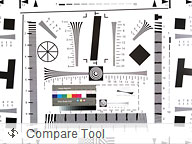
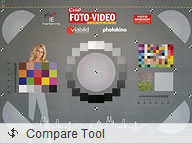

Sony Xperia Z5 in our photo compare tool
4K video recording
With a 23MP camera and powerful Snapdragon 810, the Xperia Z5 has all the required prerequisites to do 4K and should also do a pretty good job of it. It definitely lives up to those expectations, producing pretty impressive results. Videos come out with a lot of detail, nice colors and smooth motion.
The camcorder shares the same UI as the still camera, unless you go into manual mode. In manual mode you can set a timer and fiddle with settings like exposure, metering, etc. Again, we have to note that scene selection was unavailable on our test unit, unlike the Z5 Compact we previously reviewed.
For videos the Xperia Z5 features digital image stabilization - SteadyShot, but there's a price to pay - the field of view (FoV) is reduced (it's how all digital stabilization systems work). Also, it takes a toll on the quality. However, the Z5 does show major improvements in this area - quality isn't severely affected and the stabilization works surprisingly well. That is a trait also observed in the Z5 Compact.
The phone is smart enough to detect whether you are shooting hand-held or you have rested it on something stable but you get the reduced FoV either way if the option is turned on.
Sony has actually done some behind-the-scenes improvements on its video stabilization. Just like with the Z3+, the Z5 uses a combination of software and hardware to do the magic. The latter being an actuator system that shifts the whole lens unit to compensate for shakiness. This is slightly different from OIS and Sony has gone the extra mile to improve the de-shaking process in the Z5 family, by adding a position sensor and introducing a closed loop mode of work with feedback control from said sensor.
One notable absence in the Z5's new camera app is HDR mode in video. Hopefully, it will reappear with a future update.
The Z5 shoots truly gorgeous 4K videos with a resolution of 3840 x 2160 pixels and a steady framerate of 30 fps. The bitrate is also quite impressive at 54 to 55 Mbps, coupled with a 48 kHz audio sampling rate, captured in stereo, of course. Resolve detail is really impressive. Overall, the Z5 offers 4K video fit for a flagship.
Auto focus, however, was far from docile and in typical Sony fashion, the phone hunted for focus while video recording quite a bit. Setting the autofocus to a single focus per video remedies the issue entirely. It is also worth noting that we shot on a pretty windy day, which brought in some shakiness.
Final words
It is no secret that Sony's mobile division is struggling and has been doing so for quite some time. Moreover, the situation might be even more serious than we think, especially judging by CEO Kazuo Hirai's decision to actually give Sony mobile a year or so to start bringing in a profit, before resorting to other measures. The more we think about it, however, it seems obvious that the
Japanese giant is failing not because of bad products, but rather a long
streak of poor market decisions that brought about a serious image
problem. The Xperia Z5 is a perfect example. It is a superbly designed
and built device, with quite impressive specs, definitely worthy of
competing in the big leagues. The very same goes for the Z5 Compact,
which even holds somewhat of a monopoly by offering flagship power in
the sub 5.0 inch market. And then there is the Z5 Premium, with its
record-setting 4K display.
The more we think about it, however, it seems obvious that the
Japanese giant is failing not because of bad products, but rather a long
streak of poor market decisions that brought about a serious image
problem. The Xperia Z5 is a perfect example. It is a superbly designed
and built device, with quite impressive specs, definitely worthy of
competing in the big leagues. The very same goes for the Z5 Compact,
which even holds somewhat of a monopoly by offering flagship power in
the sub 5.0 inch market. And then there is the Z5 Premium, with its
record-setting 4K display.All three are excellent devices that have a lot to show, but are sadly held back by steep pricing and the reputation of their respective predecessors, be it good or bad. When looking at the Xperia Z5, we really tried hard to focus on the positive, like the more powerful camera hardware, the convenient fingerprint reader and largely remedied overheating issue.
Still, we can't pretend that the Z3+ doesn't exist, with almost identical specs and a considerably lower price tag. All things considered, choosing between the Z5 and the Z3+ seems to be just as difficult as picking the Z5 Compact or the Z3 Compact, even if the considerations are slightly different. Let's consider a positive. Here is a quick rundown of our test findings on the device, hopefully they can make the decision a little easier:
Sony Xperia Z5 key test findings
- The Xperia Z5 has superb build-quality. The exposed microUSB port is a lot more convenient than Sony's previous covered solution, but the volume keys is somewhat oddly positioned.
- The display offers above maximum levels of brightness at around 583 nits, but that is nowhere near as bright as what the Z3+ and Z5 Compact are capable of. Contrast is also average, despite the nice deep blacks. The same goes for color accuracy, which is not up there with the best. The resolution is still 1080p, same as last year's generation, but if you want more, there is the always the 4K Z5 Premium.
- The side-mounted fingerprint reader is really convenient, fast and reliable.
- Battery life is good with a respectable 73 hours of endurance rating. It is definitely better than the 65 hours the Z3+ managed to score, but still not quite the impressive 86 hours of the Z5 Compact.
- Based on Android 5.0, the Xperia launcher runs quite nicely on the Z5 and is packed with several interesting features. The phone is definitely not lacking on the software side.
- Performance-wise, the Xperia Z5 is a true powerhouse, equipped with Qualcomm's top-of-the-line Snapdragon 810 SoC. GPU performance is pretty comparable to the Z3+, as expected.
- The speaker setup on the Z5 scored Below Average in terms of loudness, but this is actually ok for a device with stereo speakers. Still, we would have appreciated a bit more boom, at least comparable to that on the Z5 Compact.
- Audio output quality is quite good, though not class-leading
- The camera setup on the Z5 offers accurate colors and good dynamic range, but sadly samples were still plagued by typical Sony problems - corner softness and a lot of digital noise, even in the shadows of the bright day. Sony has definitely made some improvement with the new multi-aspect sensor and the electronic video stabilization at 1080p is now miles better than before thanks to some new hardware and software, but, overall, the quality difference isn't all that big, compare to the Z3+.
This, however, is not necessarily a bad thing. Less is often more, especially if it fits together seamlessly and if it "just works". Consequently, we found it fairly easy to find viable alternatives to the Z5. And a price tag of €700 or perhaps even more, puts almost any other flagship offers within an arm's reach.
Let's begin with camp Samsung, shall we? A quick online search reveals that you can actually get both the Galaxy S6 and the S6 edge for about the same price the Z5 goes. It goes without saying that both are superb devices also bearing the flagship title and offer an almost identically sized 5.1-inch superb Super AMOLED display, the distinction being the dual curve on the edge model. Combined with the powerful Exynos 7420 SoC and 3GB of RAM, there is little the S6 and S6 edge can't handle.
And if you are after something a little bit bigger then the Galaxy Note 4 fits the bill. It is, in fact, a bit older, but still packs quite a punch with its Snapdragon 805 chipset and not to mention the advanced productivity features of the S Pen. Sadly, the newer Note 5 and the Galaxy S6 edge+ are a little out of price range.
Speaking of flagships, other viable alternatives to the Xperia Z5 include the HTC One M9. They are both pretty comparable in terms of hardware, but the M9 is a bit smaller at 5.0 inches. Still, it offers the same Snapdragon 810 chip, 3GB ram and the signature metal unibody design. There is also the LG G4. It is pretty comparable as well, with a 5.5 inch display, Snapdragon 808 chip and 3GB of RAM. LG is currently selling the model at probably break-even prices, so deals are abundant online. You can also get a leather back option practically free.
And if you are really after a direct specs competitor, than look no further than the ZTE Nubia Z9. It has the exact same display size and resolution at 5.2 inches and 1080p, it also uses the Snapdragon 810 chip and even offers up to 4GB of RAM. However, the camera setup isn't quite so impressive and the Z9 is quite bulkier in size, so, there are certain tradeoffs you would have to accept.
The Motorola Moto X Style is yet another flagship alternative to the Xperia Z5. Despite still being quite new, it is reasonably priced and has a lot to offer. It is worth noting, however, that at 5.7 inches, it is a bit bigger than the Sony, but also has a lot more resolution at 1440p. Other specs on it include a Snapdragon 808 and 3GB of RAM. And if you really feel like going big, Motorola has you covered as well with the Nexus 6 and its whopping 5.96 inch screen.
A few other devices deserve an honorable mention, like the OnePlus 2 and Zenfone 2 family. The former actually uses the Snapdragon 810 SoC as well, while the latter is one of the few to rock an Intel Atom chip. And while we're on the topic of alternative silicon, you could also give the new MediaTek Helio X10 a try. It offers ample power and does cost less than its Qualcomm counterparts and has already proven quite capable in devices such as the Xperia M5 and Meizu MX5. Both worth checking out - that's for sure.
So, at the end of the day, is the Xperia Z5, the long-overdue "proper" flagship that Sony fans deserve and more importantly, is it worth buying? Well, yes and no... It is an impressive step in the right direction and a clear sign that Sony is taking notes and fixing things, or at least the most pressing ones, which are heating up the situation, quite literally. On the other hand, the Z5 seems more like an incremental move forward, somewhat lacking excitement, rather than the thrilling leap the OEM needs, if it is going to meet its looming deadline to finally break a profit.
Factoring in the steep price tag, the way we see it, the Xperia Z5 looks to be a dedicated fan pick, above anything else and even then, the 4K allure of the Z5 Premium might prove too distracting. In most other cases, if your heart is really set on Sony, the Z3+ just seems like the more sensible pick and if not, you are more than spoiled for choice elsewhere.
Subscribe to:
Post Comments
(
Atom
)






















































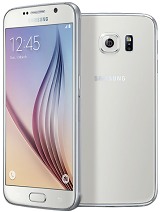
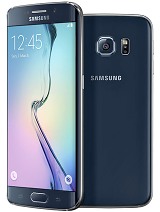
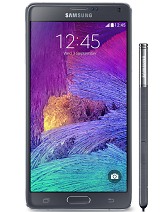
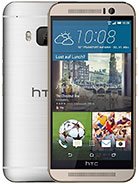
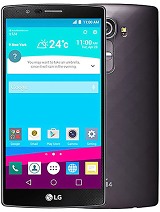

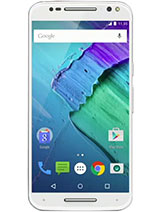
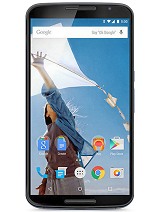
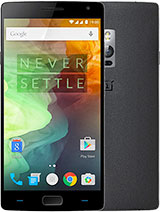

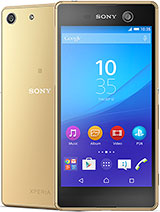
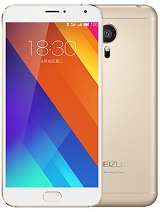




I actually enjoyed reading through this posting.Many thanks.
ReplyDeleteBuy Moto G3 Designer Covers & cases Online